Moroccan spearmint tea, known as Atay b’ Naânaâ, is a cultural symbol of hospitality and warmth. Traditionally, Moroccans enjoy this refreshing blend of spearmint and green tea. However, they often enrich it with floral elements, creating unique flavor profiles that reflect Morocco’s diverse regions and seasonal offerings. These floral infusions not only add delightful aromas but also carry cultural and historical significance.
Bitter Orange Blossom (Zhar)

What is Zhar?
Zhar, or bitter orange blossom, comes from the fragrant flowers of the bitter orange tree. Known for its light, citrusy, and floral scent, Zhar is a favorite addition to Moroccan tea, especially during the spring months. It enhances the natural freshness of spearmint, creating a balanced and refreshing cup that is ideal for warmer weather.
1. Flavor Profile
- Citrusy Notes: Zhar imparts a subtle citrus flavor to Moroccan tea, offering a delicate bitterness that complements the tea’s sweetness. The floral notes add an extra layer of complexity to the tea.
- Refreshing Aroma: The scent of Zhar is uplifting and light, making it perfect for afternoon tea sessions. Its fragrance fills the air as the tea steeps, creating an inviting atmosphere.
2. Seasonal Use
- Spring Favorite: Zhar is most popular during spring, when the orange trees bloom across Morocco, particularly in regions like Fez and Meknes. Families often harvest the blossoms fresh and use them immediately in their tea.
- Preserving the Flavor: Many households also prepare orange blossom water from fresh Zhar during spring. This allows them to enjoy the flavor throughout the year, even when the fresh blossoms are not available.
3. Regional Preference
- Fez and Meknes: Known for their rich orange groves, these cities have a long tradition of using Zhar in their tea. In these regions, tea infused with Zhar is a symbol of local pride and seasonal celebration.
- Mediterranean Influence: The use of bitter orange blossom reflects Morocco’s connection to Mediterranean flavors. It pairs well with the aromatic herbs commonly found in Moroccan cuisine.
4. Preparation Tips
- Using Fresh Blossoms: Add a small handful of fresh Zhar blossoms to a teapot along with spearmint leaves. Steep for 3-5 minutes to allow the flavors to meld.
- Orange Blossom Water: For a more consistent flavor, add 1-2 teaspoons of orange blossom water to a pot of freshly brewed tea. This method is particularly useful when fresh blossoms are not in season.
Fresh Rose Petal (Ward Beldi)
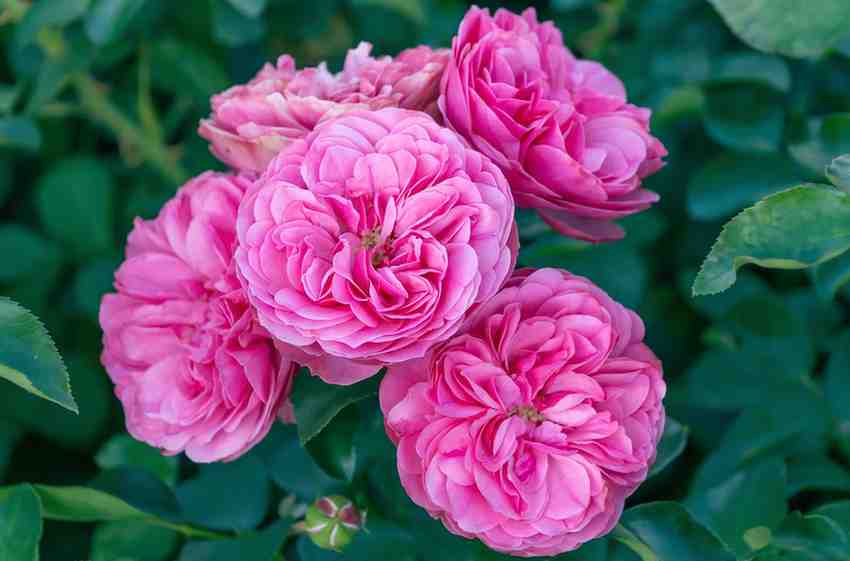
What is Ward Beldi?
Ward Beldi, or Moroccan rose, comes from the damask rose variety cultivated in Kelaat M’gouna, famously known as the Valley of Roses. Unlike extracts, fresh petals of these roses are directly added to Moroccan tea, imparting a sweet, floral aroma that elevates the tea to a luxurious experience.
1. Flavor Profile
- Sweet Floral Notes:Fresh rose petals infuse the tea with a gentle sweetness that complements the natural flavors of spearmint, resulting in a soft and rounded taste that lingers.
- Aromatherapy Benefits: The scent of Ward Beldi is believed to have calming properties, making rose-infused tea a perfect choice for unwinding after a long day.
2. Seasonal Use
- Spring and Summer Favorite: Rose petals are particularly popular during the blooming season in April and May. This period coincides with the Rose Festival in Kelaat M’gouna, where locals celebrate the harvest of these precious flowers.
- Year-Round Enjoyment: While fresh petals are used during the blooming season, rose petal extract is available throughout the year, allowing for a consistent infusion that captures the essence of Moroccan roses.
3. Traditional Significance
- Symbol of Hospitality: In Moroccan culture, offering tea infused with rose extract symbolizes warmth and hospitality. It is often served to guests during family gatherings and special celebrations.
- Enhancing Festive Occasions: Rose-infused tea is a staple at weddings and religious holidays, adding a touch of elegance and sweetness to the occasion.
4. Preparation Tips
- Rose Petal Extract: Add 2-3 drops of rose petal extract to a pot of brewed spearmint tea. Stir gently to blend the flavors.
- Blending with Mint: Mix the rose extract with fresh spearmint leaves before adding hot water. This method ensures an even infusion of floral notes.
Jasmine Flowers (Yassmine)
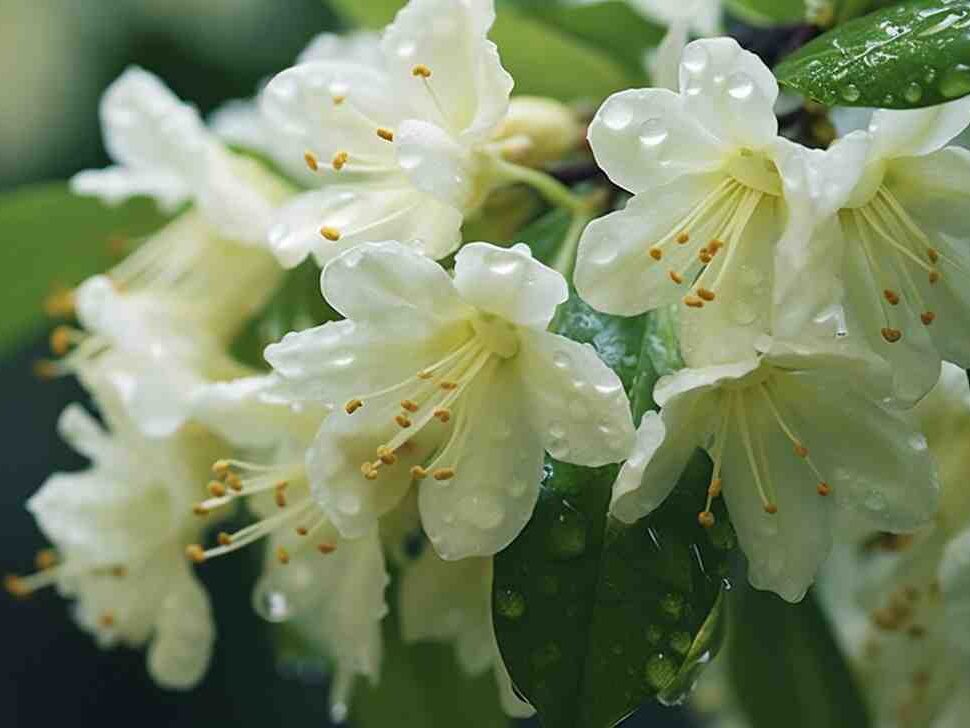
What is Yassmine?
Yassmine, or jasmine flowers, offer a delicate, sweet fragrance that blends beautifully with spearmint tea. Jasmine has a long history in Moroccan culture, particularly in cities influenced by Andalusian traditions, such as Fez and Marrakech.
1. Flavor Profile
- Delicate Sweetness: Jasmine introduces a gentle floral sweetness that complements the mint without overshadowing it. The result is a smooth, aromatic tea that is both refreshing and calming.
- Relaxing Scent: The scent of jasmine is known for its soothing effects, making jasmine-infused tea ideal for evening relaxation.
2. Andalusian Influence
- Cultural Roots: The use of jasmine in Moroccan tea reflects the influence of Moorish culture, where gardens filled with jasmine were a symbol of beauty and tranquility.
- Heritage in Fez and Marrakech: These cities have preserved the tradition of using jasmine flowers in tea, often enjoyed in the courtyards of riads (traditional Moroccan houses).
3. Ideal Times for Use
- Evening Tea: Jasmine’s calming properties make it perfect for evening tea, helping to unwind after a busy day.
- Special Gatherings: Jasmine tea is often served during social gatherings, offering a soothing and aromatic experience that encourages relaxation and conversation.
4. Preparation Tips
- Using Fresh Jasmine Flowers: Add 5-6 fresh jasmine flowers to the teapot along with spearmint leaves. Steep for 2-3 minutes to prevent bitterness.
- Blending with Other Floral Notes: Combine jasmine with a few drops of rose extract for a more complex floral blend.
Acacia Gum (Talh el-Horr)
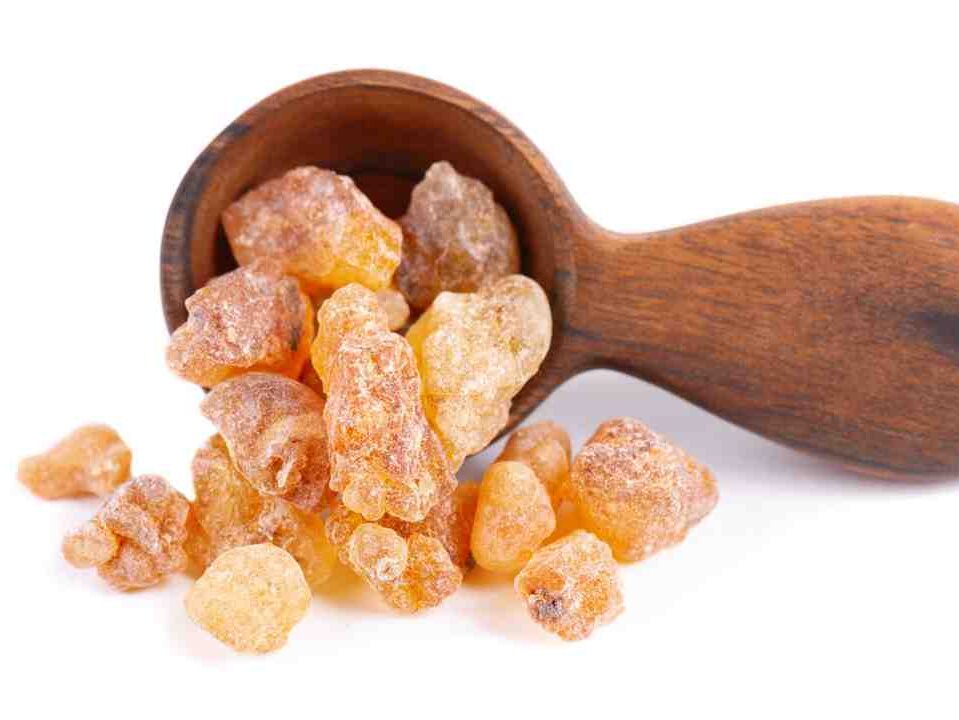
What is Talh el-Horr?
Talh el-Horr, or acacia gum, is a natural resin that adds a subtle sweetness and smooth texture to Moroccan tea. It is valued for its ability to slightly thicken the tea, creating a richer mouthfeel.
1. Flavor Profile
- Mild Sweetness: Unlike sugar, acacia gum offers a gentle sweetness that does not overpower the minty freshness of the tea. It creates a balanced taste that is satisfying without being overly sweet.
- Silky Texture: Acacia gum dissolves slowly, adding a silky consistency to the tea, which makes each sip feel more substantial.
2. Regional Use
- Popular in Semi-Desert Areas: Acacia gum is especially common in semi-desert regions like the Sahara and Draa Valley. It is appreciated for its ability to hydrate and soothe during hot weather.
- Heritage of the Atlas Mountains: In regions like the High Atlas, acacia gum has long been used as a natural remedy and a nutritional supplement.
3. Traditional Uses
- Remedy for Sore Throats: The soothing properties of acacia gum make it a popular choice for easing throat discomfort. It is often added to tea during the winter months for this reason.
- Natural Sweetener: Talh el-Horr serves as a natural sweetening agent, preferred by those who seek a lighter, less processed way to sweeten their tea.
4. Preparation Tips
- Dissolving Acacia Gum: Add a small piece of acacia gum to the hot tea and stir gently until it fully dissolves. This process takes about 2-3 minutes.
- Balancing with Mint: Use fresh spearmint leaves to keep the tea’s herbal character strong, ensuring that the sweetness of the gum does not dominate the flavor.
Discovering Unique Herbal Infusions in Moroccan Tea
Beyond classic floral additions, Moroccan tea culture is rich with herbal infusions that offer unique flavors and health benefits. These herbal blends reflect Morocco’s diverse landscape, from the Atlas Mountains to the Saharan regions. Many of these herbs are either gathered from the wild or cultivated in family gardens, where they have been used for generations to create teas that offer both comfort and healing.
Khoudenjal, a spiced Moroccan tea, blends spices, floral, and herbal elements. Variations like Amazigh tea or Lkhalta also offer different ways to enjoy Moroccan tea traditions.
Amazigh Tea (Lkhalta)
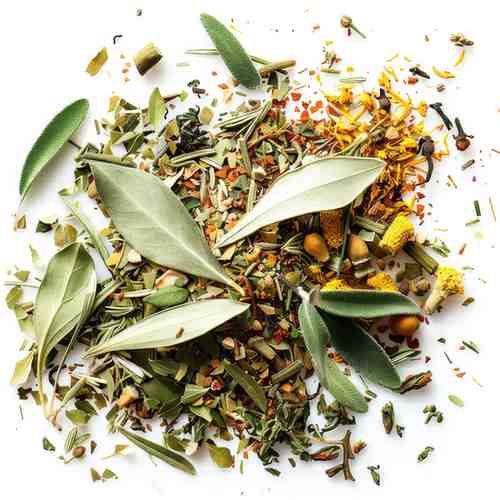
What is Amazigh Tea?
Amazigh tea, also known as Lkhalta or Laâshoub, represents a blend of herbs traditionally enjoyed by Berber communities. Unlike the typical mint tea, Amazigh tea combines a variety of dried herbs, creating a complex and aromatic blend that predates the arrival of Chinese green tea in Morocco.
Common Ingredients in Amazigh Tea
- Lavender: It introduces a sweet, floral aroma that balances the earthier tones of other herbs.
- Sage: This herb provides a savory, peppery note, adding depth to the tea.
- Myrtle Leaves: Known for their mild sweetness, myrtle leaves create a soothing backdrop.
- Olive Leaves: These leaves add a gentle bitterness, offering contrast to sweeter herbs.
- Chamomile: With its calming, honey-like flavor, chamomile enhances the tea’s relaxing qualities.
- Wild Pennyroyal (Fliou): Known for its sharp, minty taste, pennyroyal adds a refreshing kick.
Health Benefits of Amazigh Tea
- Calming Effects: The combination of lavender and chamomile makes Amazigh tea perfect for reducing stress and promoting relaxation.
- Digestive Support: Herbs like sage and wild pennyroyal help soothe digestion, making this tea a popular choice after meals.
- Respiratory Relief: The blend’s essential oils provide support for respiratory health, which is particularly beneficial in cooler, mountainous regions.
How to Prepare Amazigh Tea
- Traditional Method: Mix 1 teaspoon of mixed herbs in a teapot with hot water. Allow it to steep for 5-7 minutes before serving. A touch of honey can be added for extra sweetness.
- Blending with Green Tea: For a variation, combine Amazigh herbs with gunpowder green tea. This mixture creates a rich, layered flavor profile.
Woolly Cumin: A Bold Addition
What is Woolly Cumin?
Woolly cumin, Ammodaucus leucotrichus known as kamoun soufi, is a wild herb that grows in the Atlas Mountains. It brings an earthy, slightly bitter note to Moroccan tea, making it a favorite among those who enjoy stronger flavors.
Flavor Profile and Use
- Earthy Depth: Woolly cumin enhances the tea with its bold, earthy flavor.
- Bitterness and Sweetness: This herb introduces a slight bitterness that contrasts well with the sweet and minty elements in the tea.
Traditional Uses of Woolly Cumin
- Digestive Aid: Berber communities use woolly cumin for digestive support, especially after heavier meals. It is known to ease bloating and improve intestinal comfort.
- Warming Properties: People often add this herb to tea during cold weather as it helps to warm the body and improve circulation.
How to Incorporate Woolly Cumin
- Steep Briefly: Use 1/2 teaspoon of woolly cumin seeds in a pot of mint tea with the Khalta or mixed herbs. Steep for 3-4 minutes to avoid an overly strong flavor.
Lemon Verbena (Louisa)
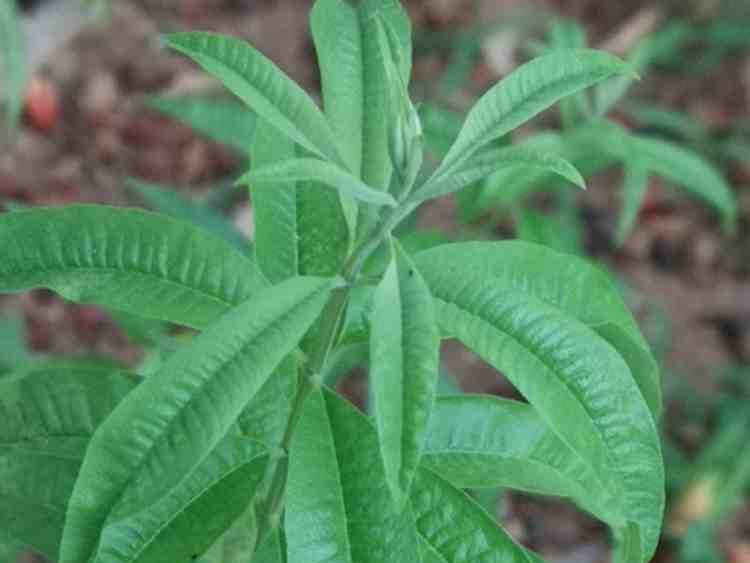
What is Lemon Verbena?
Lemon verbena, locally known as Louisa, is a beloved herbal infusion in Morocco. It offers a bright, citrusy flavor, adding a refreshing twist to traditional spearmint tea.
Flavor Profile and Benefits
- Citrus Freshness: Lemon verbena gives tea a zesty, fresh note that perfectly complements spearmint’s cool taste. It is especially popular in summer, providing a refreshing drink for hot afternoons.
- Light and Uplifting: Its aroma is energizing, making it ideal for those looking for a pick-me-up without the heaviness of other herbs.
Health Benefits of Lemon Verbena
- Promotes Relaxation: Known for its soothing qualities, lemon verbena helps reduce stress and promote relaxation.
- Digestive Support: This herb aids in easing stomach discomfort, making it a great addition to tea after meals.
How to Use Lemon Verbena in Tea
- Fresh Leaves: Add 5-6 lemon verbena leaves to the teapot with spearmint. Steep for 3-5 minutes to let the citrusy notes blend smoothly.
- Pairing with Green Tea: For a deeper flavor, blend with gunpowder green tea. The combination provides a balance between citrusy freshness and herbal richness.
Rosemary and Thyme: A Savory Touch
What are Rosemary and Thyme?
Rosemary and thyme are traditional herbs with a savory, slightly piney flavor. They add a unique twist to Moroccan tea, blending warmth with refreshing notes.
Flavor and Use
- Savory and Aromatic: Rosemary offers a woody aroma, while thyme introduces a mild peppery note. Together, they create a complex herbal blend that enriches the tea.
- Ideal for Cooler Months: These herbs work well in colder weather, providing a warming sensation that is perfect for sipping on chilly evenings.
Health Benefits
- Respiratory Health: Both rosemary and thyme contain antimicrobial properties, making them effective for soothing coughs and clearing congestion.
- Boosting Energy: Rosemary is believed to enhance circulation and increase energy levels, making it a popular choice during the winter months.
Preparation Tips
- Using Fresh Herbs: Use 1 teaspoon of dried rosemary or 2-3 sprigs of fresh thyme in a pot of spearmint tea. Steep for 5 minutes to bring out their flavors.
- Blending with Mint: These herbs pair well with fresh mint, creating a tea that is both comforting and refreshing.

